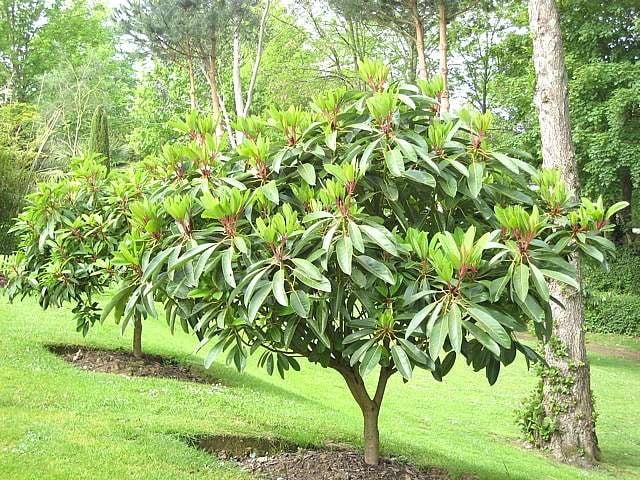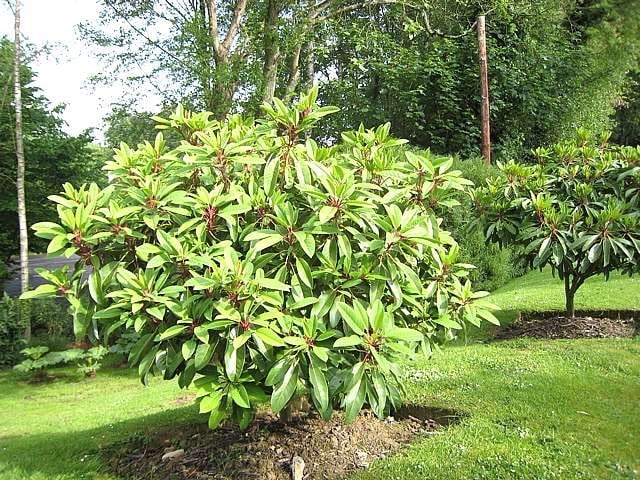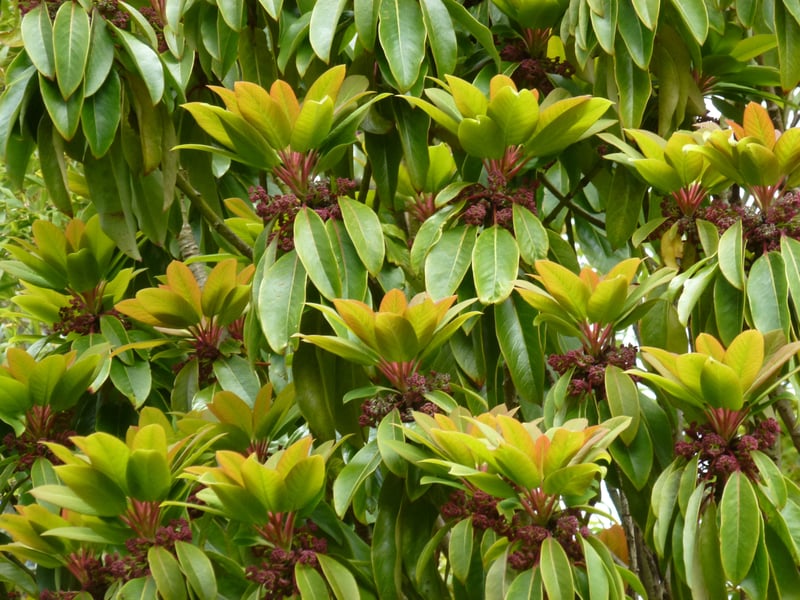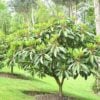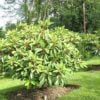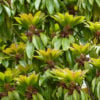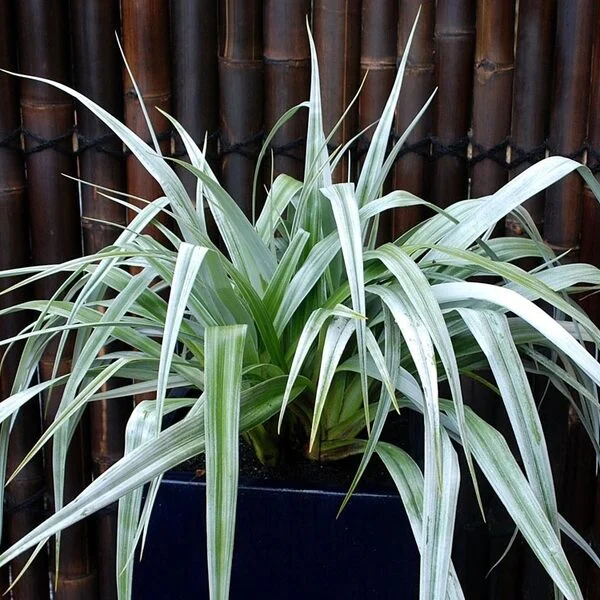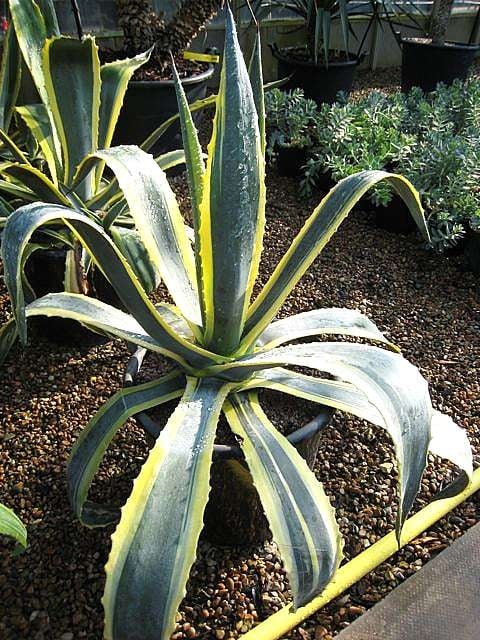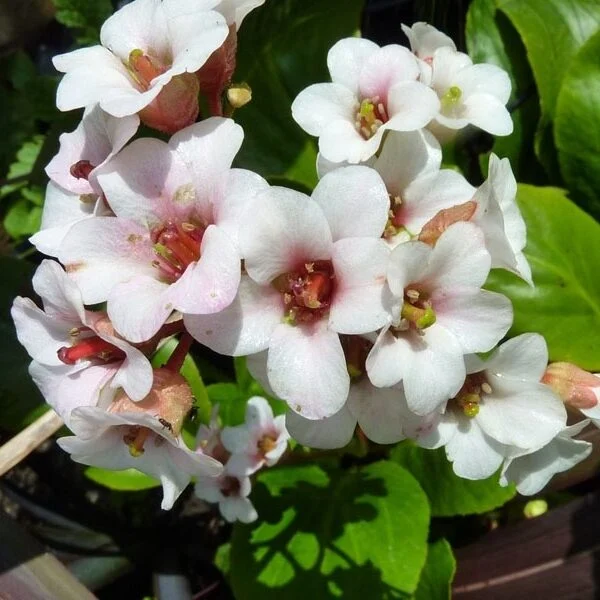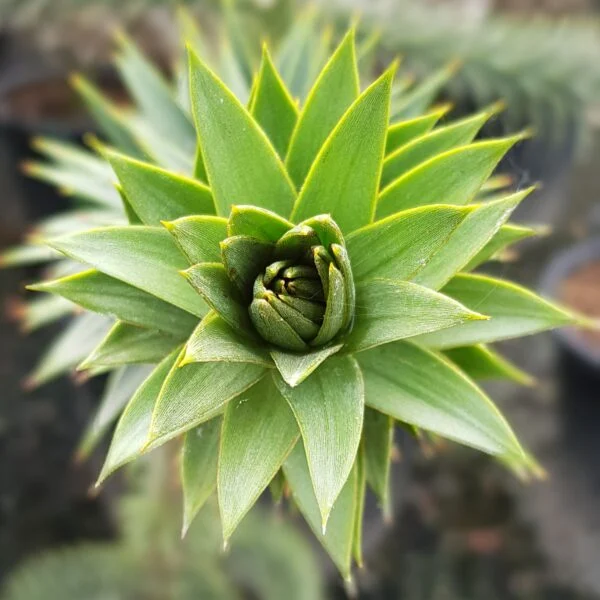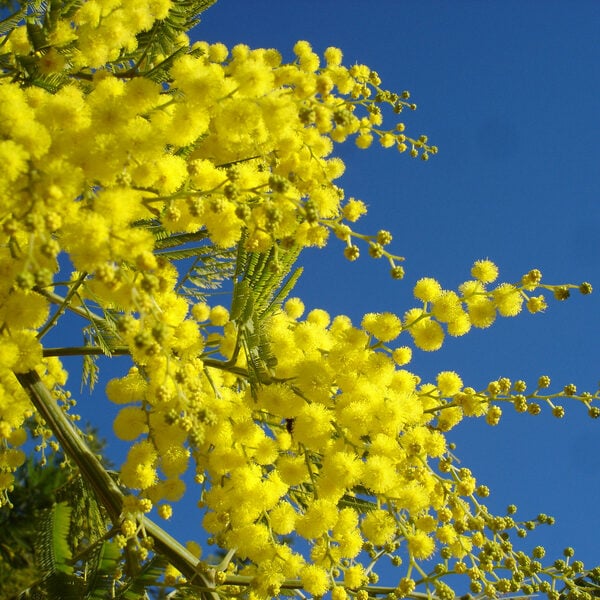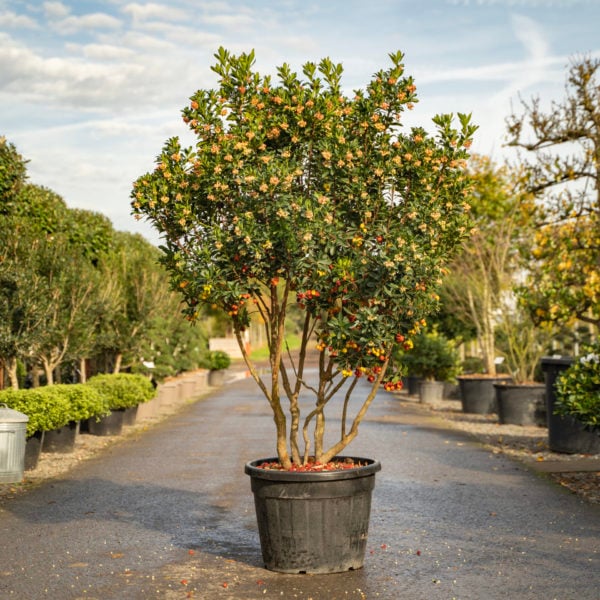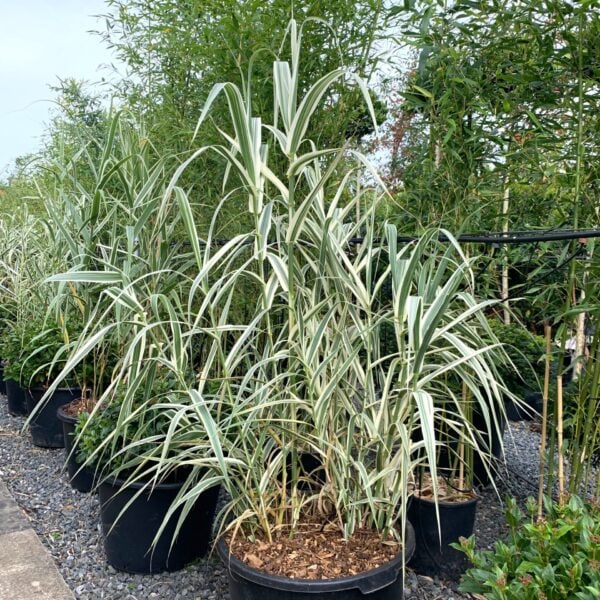Daphniphyllum macropodum
Astonishingly beautiful little evergreen tree from east Asia. The young growth in the spring is always worth the wait. Hardy and reliable. Slow growing : 10ft in 10 years. Please contact us for stock availability and sizes.

Hardiness level Green
One of my most favourite little evergreen trees. Tastefully exotic, immaculately mannered and with an aristocratic lineage. The young growth is like masses of miniature Cycads. The various reddish hues contrast beautifully with the dark green of the previous year's growth. A wonder to behold. Left to its own devices, it's a big bush but only a modicum of mild Creative Maintenance is required to turn it into a shapely little tree - either with a single trunk or a collection of trunks.
It's hardy and seems unfussy about soil. Acid or alkali, clay or sand but we know it grows well on clay. We planted masses at the old nursery near Horsham - partly because we love them and partly to get some seed. Seed production is often a function of numbers - the more plants you have, the more seed you'll have. You can't tell whether you have a male or female plant until they flower (they're different but neither is exciting) and common sense dictates that the more plants you have, the greater the chances of seed being produced.
Although we now produce prodigious quantities of our own home grown seed and this little tree is easy to grow in the ground, I wish I could say the same about growing them on the nursery. Fuss pots, fuss pots, fuss pots. I suspect they just need neglect in a pot and we're really bad at neglect. Wrong compost or too much water and they hate it. Bung them in the ground and they love it. They're no longer dependant on a stupid human and just get on with their lives unmolested.
They come from Korea and Japan and in common with most plants from Korea and Japan, one warm day in early March means Spring has arrived and they burst into leaf. Wrongly. With our treacherous British weather this is a bad idea. At the old nursery (a notorious frost pocket), practically every year the new growth would be destroyed by the frost but it didn't matter. Interestingly, the ones in the frostiest part of the garden are the best plants. The frost has the effect of pruning them and they grow much more densely. They're amazingly resilient plants. There's fossil evidence that they've been around for many millions of years and one thing that these primitive plants have in common is an ability to survive. The contrast between their behaviour in the ground and in a pot on our nursery almost feels like we're insulting them by having the arrogance to think we know better than they do. Humbled and humiliated by a Daphniphyllum.
Not fast growing but steady and long lived. We have some 20ft tall after 25 years in the shade but only 10ft in the sun over the same period. They're different but both lovely. As one would expect, the ones in the sun are dense, the ones in the shade are more open.
We propagate these from our own seed.
N.B. When clipping several plants with the same tool, have a bucket containing a 5% bleach solution and swish your blades around for 30 seconds between plants to sterilise them. This will help avoid the chance of cross contamination of disease.
As with all woody plants, plant high, exposing as much of the taper at the base of the trunk as possible. Allowing soil to accumulate round the base of a tree can be fatal. Keep very well watered when first planted.
Additional Information |
|
|---|---|
| Soil Type | |
| Light | |
| Plant Type | |
| Continent of Origin | |
| Specialist Plants | |
| Features | |
| Tree Size | |
| Situation | Coastal, Mild City Gardens, Plants for Pots, Sheltered Garden |
| Flower Colour | |
| Hardiness | |





